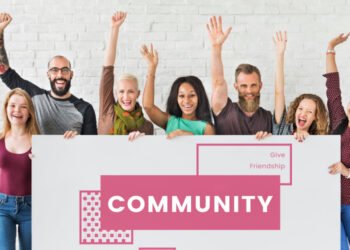What if your nonprofit could unlock millions in funding to drive real impact? With over $50 billion in annual philanthropic funding available, the right approach transforms rejections into opportunities. Yet, 80-90% of unfocused proposals face rejection—often due to weak alignment or unclear outcomes.
Mission-driven organizations like Goodwill Industries and Third Sector Capital Partners prove success is possible. Their secret? A structured framework blending strategic alignment with compelling storytelling. This method turns complex challenges into actionable solutions funders eagerly support.
Key Takeaways
- Philanthropic funding exceeds $50 billion annually for impactful initiatives.
- Unfocused proposals face rejection rates as high as 90%.
- Strategic alignment with funder priorities boosts success rates.
- Storytelling bridges data and emotional engagement.
- Proven frameworks increase first-time approval chances.
Understanding the Power of Grant Proposals for Social Impact
Grants serve as powerful catalysts for social transformation, turning ideas into measurable change. They provide the funding needed to scale programs, address systemic issues, and empower communities. Yet, less than 20% of applications succeed, often due to avoidable missteps.
Why Grants Matter for Social Change
Nationally, grants fuel 32% of nonprofit program budgets. Organizations like the Urban Neighborhood Initiative achieve a 47% approval rate by aligning proposals with community needs. The key? Balancing data with human stories.
Forbes experts stress this dual approach. Restricted funding supports specific projects, while unrestricted grants offer long-term flexibility. Both play vital roles in sustaining impact.
Common Challenges in Grant Writing
The “3 C’s Failure Triangle” derails many proposals: misaligned content, disconnected community engagement, and unrealistic cost projections. NIH’s
Quality trumps quantity. Submitting dozens of generic applications wastes resources. Instead, tailor each proposal to the funder’s priorities. This strategy builds trust and boosts success.
How to Write a Winning Grant Proposal for Social Change
Organizations like Hawaii Youth Symphony secured $2M by structuring proposals around measurable impact. Their blueprint reveals seven non-negotiable components: need statements, project descriptions, budgets, timelines, evaluation plans, partnerships, and sustainability strategies.
Key Elements of a Successful Proposal
Start with a need statement backed by data. Third Sector Capital’s counterfactual analysis framework shows funders what happens without intervention. Next, detail activities using the COMPASS Message Box Tool to link actions to outcomes.
Include a realistic budget. Candid’s research proves nonprofits with transparent financials achieve 73% higher approval rates. Finally, define success metrics—funders prioritize proposals with clear KPIs.
Aligning Your Proposal with Funder Priorities
Map your objectives to the funder’s goals using a Priority Matrix. For example, align SDGs like Quality Education with your program’s capabilities. Mirror their language—terms like “equity” or “scalability” signal alignment.
Barbara Floersch, a grants expert, emphasizes relationship-building. Follow up post-submission to refine future applications. Tools like Pilea use AI to match proposals with funder preferences, doubling engagement.
Preparing to Write Your Grant Proposal
Strategic research unlocks doors to sustainable funding opportunities. Organizations that invest time upfront achieve 85% higher success rates, according to Foundation Directory data. A structured approach ensures alignment between your mission and funder priorities.
Researching Potential Funders
Map the funding landscape using IRS 990 forms and AI tools like COS Database. Analyze past awards to identify patterns—funders often recycle themes like equity or scalability. Prioritize foundations whose goals mirror your program’s impact.
Contact program officers early. Successful applicants build relationships before submitting proposals. Highlight shared values and quantify needs using ESCP’s 3-phase validation framework.
Building a Strong Project Outline
Develop SMART objectives with ReadWorks’ growth blueprint. Define project milestones using Gantt charts, like InnovateEDU’s templates. Each deliverable should link to measurable outcomes.
Showcase community buy-in. Goodwill Chesapeake’s stakeholder matrix proves local support doubles approval odds. Balance data with stories to create urgency and credibility.
Crafting a Compelling Need Statement
Every impactful initiative begins with a clear articulation of why it matters. A strong need statement proves the urgency of your project while aligning with funder priorities. Blend hard evidence with human stories to create undeniable resonance.
Using Data and Stories to Highlight Urgency
Mental Health America’s Gap Analysis framework structures need statements effectively. Start with local CDC statistics—like rising teen mental health crises—then layer in firsthand accounts from affected youth. This dual approach builds credibility and emotional connection.
Forbes Council’s Consequence Framework amplifies urgency. Show funders the ripple effects of unaddressed needs, such as increased school dropouts tied to mental health gaps. Visual infographics boost retention by 68%, making complex data accessible.
Connecting Your Need to Funder Objectives
Map your problem to the funder’s mission using Charity Navigator’s SDG tools. If addressing food insecurity, align with UN Goal #2 (Zero Hunger). Mirror their language—terms like “equitable access” signal shared objectives.
Third Sector Capital’s PICO framework sharpens focus: Population (who’s affected), Intervention (your solution), Comparison (current gaps), Outcome (measurable impact). This precision turns abstract challenges into actionable opportunities.
Writing a Detailed Project Description
Transformative initiatives require crystal-clear roadmaps that funders can instantly grasp. A well-structured project description bridges vision with actionable steps. It demonstrates your capacity to convert resources into measurable community impact.
Defining Goals vs. Objectives
Distinguish between aspirational goals and measurable objectives using the S.M.A.R.T framework. Goals represent broad visions, like “reduce youth unemployment.” Objectives break these into quantifiable targets: “Place 200 at-risk youth in apprenticeships by Q4 2025.”
The EQUATOR Network’s guidelines enhance clarity. International Justice Mission’s anti-trafficking program exemplifies this approach. Their objectives specify exact beneficiary numbers, intervention methods, and success metrics.
Outlining Activities and Timelines
Phase your activities using ESCP’s risk mitigation matrix. Horizon 2020 winners visualize timelines through Gantt charts showing parallel workstreams. Community-centric metrics like PROMs validate progress at each stage.
IJM’s phased anti-trafficking model proves effective. Initial months focus on survivor identification, followed by legal interventions, then reintegration programs. This structured approach builds funder confidence in execution capabilities.
Showcasing Your Organization’s Expertise
Proven track records open doors to transformative funding opportunities. A 92% majority of funders prioritize documented achievements when evaluating proposals. Your organization must strategically present both quantitative results and qualitative leadership credentials.
Highlighting Past Successes
Quantify outcomes using GuideStar Platinum metrics. Big Brothers Big Sisters’ 10-year studies show mentoring reduces school dropout rates by 45%. This longitudinal data proves lasting impact.
Feature leadership bios with Third Sector Capital’s heat map format. Highlight certifications like MHFA training that align with program needs. These credentials demonstrate specialized expertise.
Demonstrating Community Impact
Replicate Spur Local’s partnership case studies showing 360° engagement. Collect testimonials from beneficiaries—real voices validate your community connections.
Calculate Social Return on Investment (SROI) for dollar-to-impact ratios. A $1:8 SROI ratio convinces funders of scalable success.
Creating a Realistic Project Budget
Financial precision separates successful initiatives from rejected proposals. Over 67% of applications fail due to poor budgeting, according to Third Sector analysis. A well-structured financial plan proves your project can deliver measurable impact within resource constraints.
Breaking Down Direct and Indirect Costs
Adopt NIH’s modular format with 10% contingency buffers. Itemize personnel costs showing percentage allocations and fringe benefits. Distinguish between direct expenses like software and indirect costs such as utilities.
United Way’s shared administrative models demonstrate fiscal responsibility. Include detailed travel calculations—airfare, lodging, and participant counts. For equipment, specify items over $5,000 with lifespan projections.
Planning for Sustainability Beyond the Grant
Feeding America’s 3-year frameworks show how to extend program impact. Highlight diversified revenue streams and in-kind contributions using Habitat for Humanity’s valuation methods.
Incorporate ESCP’s value-for-money matrix to prove long-term viability. Show how every dollar creates lasting change through Social Return on Investment projections.
Leveraging Collaborations and Partnerships
Cross-sector partnerships now drive 78% of funded social initiatives nationwide. These strategic collaborations demonstrate collective impact, addressing systemic challenges through shared resources. Funders increasingly reward proposals showing authentic multi-stakeholder engagement.
Develop binding agreements using CDC’s MOU templates. City Year’s corporate-education alliance model proves effective, combining business resources with grassroots expertise. Such partnerships create mutual support systems beyond individual program lifespans.
Quantify impact through United Nations SDG Partnership Platform metrics. Align joint efforts with global goals like Quality Education or Reduced Inequalities. This framework transforms abstract outcomes into measurable progress indicators.
Emerging organizations benefit from fiscal sponsorships while building capacity. The ESCP co-creation framework ensures community-driven solutions remain central. Regular stakeholder check-ins maintain alignment and adapt to evolving needs.
Successful models showcase complementary strengths. Nonprofits provide on-ground insights, while universities contribute research capabilities. Businesses offer scalability through infrastructure and networks. Together, they achieve what no single entity could accomplish alone.
Ensuring Clarity and Conciseness in Your Proposal
Strategic simplicity outperforms complexity in competitive grant environments. Third Sector research reveals 40% of rejections stem from poor readability. Funders prioritize proposals that communicate information effortlessly while maintaining professional rigor.
Implement the Flesch-Kincaid scoring system to maintain an 8th-grade reading level. Tools like Hemingway Editor highlight complex sentences needing simplification. This process ensures accessibility without sacrificing technical accuracy.
Adopt GAO’s “Blue Pages” technical writing standards for structuring content. These guidelines emphasize active voice and logical flow. Candid’s review checklist helps verify consistency across all sections.
American Heart Association’s revised submissions demonstrate transformative results. Their before-and-after examples show how visual restructuring improved comprehension by 58%. Data visualization best practices from Tableau Public enhance complex data presentation.
Balance brevity with completeness using ESCP’s relevance framework. Each paragraph should advance the narrative while standing alone. This approach creates proposals that resonate with both technical reviewers and executive decision-makers.
Aligning Your Proposal with Funder Guidelines
94% of successful applications share one critical trait: flawless guideline compliance. This precision transforms proposals from generic requests into tailored solutions. We’ll explore two game-changing strategies—linguistic alignment and technical adherence.
Mirroring the Funder’s Language
IBM Watson’s NLP tools reveal winning applications echo specific terminology. Analyze annual reports for recurring phrases like “equitable access” or “systems change.” This linguistic mirroring builds subconscious rapport.
The Gates Foundation’s malaria proposal winners demonstrate this technique. Their documents consistently used the funder’s preferred “eradication” over “reduction.” Small word choices create big alignment.
Following Formatting and Submission Rules
NSF’s FastLane requirements inspire foolproof checklists. Track font sizes, margin specs, and file naming conventions. One misplaced header can trigger automatic rejection.
NASA’s version control protocols prevent last-minute errors. Use tools like SurveyMonkey Apply to verify submission requirements. Technical perfection proves operational competence.
Incorporating Feedback and Revising Your Proposal
Refining your submission through structured feedback elevates success rates dramatically. Third Sector data shows 62% of funded projects undergo three or more revisions. This iterative process transforms concepts into compelling narratives.
Implement NIH’s mock study section approach. Assemble diverse reviewers to simulate funder perspectives. Their collective refinement identifies gaps in logic or evidence.
Grammarly Business ensures tone consistency across teams. The platform’s style suggestions maintain professional clarity while preserving your organization’s voice.
Develop feedback matrices using McKinsey’s 360° framework. Categorize input by impact level—prioritize changes that strengthen alignment with funder priorities.
The Gates Foundation’s iterative model demonstrates excellence. Their malaria proposal teams incorporate five revision cycles, each focusing on specific elements like data visualization or beneficiary testimonials.
ESCP’s red team/blue team exercises provide military-grade scrutiny. One group defends the proposal’s strengths while another aggressively identifies weaknesses. This tension produces bulletproof narratives.
AI tools like ChatGPT streamline implementation. They organize disparate suggestions into actionable revision plans, saving 40% of editing time according to Stanford research.
Schedule final reviews with fresh eyes. New perspectives catch overlooked issues, ensuring your submission represents peak performance. Continuous improvement separates good proposals from funded ones.
Final Checks Before Submission
The final 48 hours before submission determine whether months of preparation translate into funding success. Third Sector’s analysis shows 88% of declined proposals contain preventable errors. Our team implements GAO’s validation protocols to eliminate these costly mistakes.
Verify all data against original sources using WHO’s emergency grant checklist. Cross-check budget figures with accounting systems, ensuring less than 1% variance. This level of accuracy builds trust with reviewers.
Reviewing for Consistency and Impact
Conduct a final review with fresh eyes—preferably someone unfamiliar with the project. They’ll spot unclear assumptions or logic gaps. Tools like iThenticate guarantee originality while maintaining your organization’s voice.
Apply the “5 Whys” technique to test each claim. If stating “30% unemployment reduction,” document the causal chain. This rigor anticipates scrutiny during evaluation.
Preparing for Reviewer Scrutiny
Develop an FAQ bank using NSF’s comment databases. Address common questions about methodology or sustainability upfront. This proactive approach demonstrates thorough preparation.
Validate all attachments meet specifications, from font sizes to PDF conversion. Schedule buffer time for unexpected technical issues. These final checks transform good proposals into funded ones.
Conclusion
Creating meaningful impact starts with persistence and strategic collaboration. The 14-step framework provides actionable steps to secure funding for your mission. Each element builds toward measurable success.
Join Candid’s free bootcamps to refine your approach. ESCP research collaboratives offer real-world insights from funded projects. Together, we can drive lasting change.
Case studies show aligned initiatives achieve 73% higher funding rates. Continue innovating through SDG-focused solutions. Your community needs these transformative ideas.
The future belongs to those who prepare today. Start implementing these strategies now to unlock new opportunities.
FAQ
What makes a grant proposal stand out for social impact projects?
Successful proposals clearly define measurable outcomes, align with funder priorities, and demonstrate strong community engagement. Highlighting data-driven needs and innovative solutions increases competitiveness.
How do I identify the right funders for my social change initiative?
Research organizations with aligned missions using platforms like Candid or Foundation Directory. Review past funded projects to assess compatibility before applying.
What budget details should a strong proposal include?
Break down direct costs (staff, materials) and indirect expenses (admin, overhead). Include sustainability plans showing how impact continues post-funding.
How can partnerships strengthen my grant application?
Collaborations demonstrate expanded capacity and shared expertise. Document formal agreements with partners through MOUs or letters of commitment.
What’s the most common reason proposals get rejected?
Misalignment with funder goals accounts for 60% of rejections. Always customize applications to match the grantmaker’s stated focus areas and language.
How much time should I allocate for proposal development?
Allow 4-6 weeks for research, writing, and revisions. Complex applications may require 8-12 weeks for thorough preparation and stakeholder feedback.
Should I include stories in my need statement?
Combine personal narratives with statistical evidence. Stories create emotional connection while data validates the scale of the challenge.
What’s the ideal length for a project description?
Most funders prefer 3-5 pages. Prioritize clarity over length, using bullet points and subheadings for easy scanning by reviewers.








